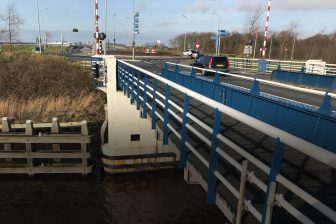Development Agencies help infra sectors fight AIDS
Development Agencies Help Infrastructure Sectors to Fight AIDS
Manila, Philippines – On the occasion of the XVI International AIDS Conference, being held in Toronto, August 13th – 18th 2006, development institutions from across the globe announced 2006-08-15 that they have come together on a “Joint Initiative by Development Agencies for the Infrastructure Sectors to Mitigate the Spread of HIV/AIDS”.
Fighting the spread of HIV/AIDS is a multi-sectoral challenge which will be helped greatly by increased coordination in infrastructure programs. There is strong evidence that links, for example, transport routes and construction sites to the spread of HIV, with employees at high risk of infection because of increased mobility and the lengthy stays away from home.
The construction workplace also offers opportunities for HIV/AIDS prevention, care and treatment interventions. Typically 7 percent of a country’s labor force works in construction of housing, buildings, and physical infrastructure such as ports, roads, and bridges. UNAIDS estimates that occupational causes account for about 9 percent of HIV transmissions, resulting in at least 250,000 deaths annually.
In a joint statement to address this issue, the signatory agencies confirmed: “We six development agencies consisting of the African Development Bank (AfDB), Asian Development Bank (ADB), UK Department for International Development (DFID), Japan Bank for International Cooperation (JBIC), KfW Entwicklungsbank (KfW development bank), and the World Bank have recognized the urgency for action in the infrastructure sectors to tackle the global HIV/AIDS crisis.” There have also been strong expressions of endorsement from further bilateral and multilateral funding agencies which will be welcome to join the initiative.
According to the statement, in view of the success in their respective organizations of funding in sectors which include transport, energy, water, urban, and rural development, the Development Agencies propose to “coordinate their activities in order to mainstream HIV/AIDS prevention and treatment programs in infrastructure sectors, to reduce the impacts of the disease as a result of infrastructure interventions, to take opportunities for implementing further countermeasures and to contribute to strengthening the HIV/AIDS strategies of partner countries.”
The agencies emphasized that they endorse the ILO Code of Practice for Addressing HIV/AIDS which sets out fundamental principles for policy development and practical guidelines for action in the world of work. They are encouraging partner countries to “incorporate HIV/AIDS programs into infrastructure support, especially where this involves (i) large-scale construction projects which mobilize many construction workers, service providers and communities who could be vulnerable to HIV/AIDS, or (ii) increased transport activity which may facilitate the spread of HIV infection.”
In putting this statement into action, the agencies agreed to share good practices in infrastructure, which will reinforce national strategies for combating HIV/AIDS, cooperation amongst all relevant constituencies, joint assessments of key interventions; and expanding the initiative to other projects funded by domestic or external sources.
This initiative aims to address HIV/AIDS globally, though the impact is currently most acute in Sub-Saharan Africa, which has just over 10 percent of the world’s population but is home to more than 60 percent of all people living with HIV – with about 25.4 million people living with HIV at the end of 2004 and a prevalence rate at around 7.4 percent for the entire region. Increasingly countries in other regions are also recognizing the challenge. In addition to the human cost, AIDS strains national economies and contributes enormously to loss of productivity and increasing costs for government and industry in construction, transport and the other infrastructure sectors.
Conditions for HIV infection in construction and transport sector:
- Condoms not used / low knowledge of their efficacy
- Duration of time away from home and family
- Boredom and opportunities with multiple partners
- Lack of access to health services
- Poor working conditions and low wages
- Unsatisfactory relations with employers
AIDS Cuts Transport Productivity:
- In South Africa, a study conducted in 2000 found that 22 percent of all transport workers were forecast to die of AIDS in 5 years.
- In Thailand, HIV/AIDS related costs to the trucking industry were expected to reach $14.5 million per year because of hiring and training new workers, lost productivity, absenteeism, and physician visits.
- In Poland and Lithuania border areas, 42 percent of truck drivers indulge in commercial sex, with 33 percent of those having casual sex not using condoms.
- HIV cases increased 50 fold after China’s Kunming-Nanning highway was completed.
U las zojuist één van de gratis premium artikelen
Onbeperkt lezen? Profiteer nu van de introductieaanbieding voor € 10,- per maand.
Bent u al abonnee?



